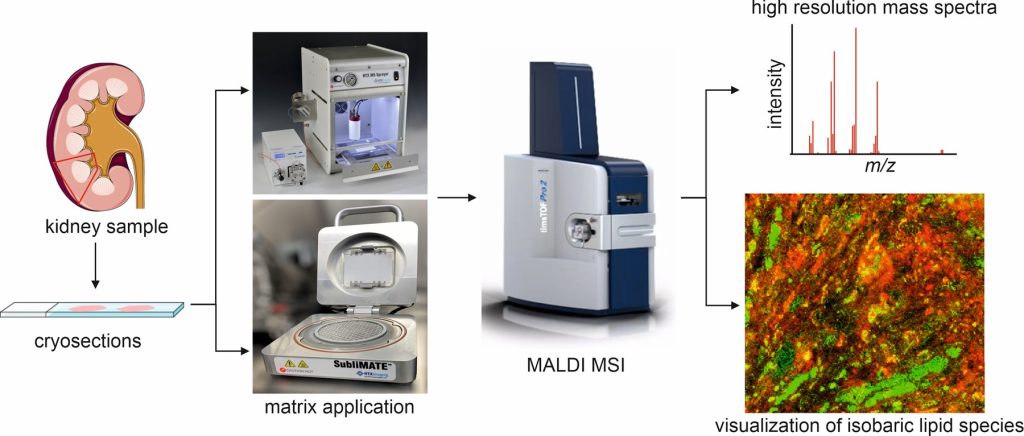Short Report by Kathrin Engel: Mass Spectrometry Imaging for Spatial Resolution of Lipids in Biological Samples (July-November)
Today, mass spectrometry imaging (MSI) techniques are widely used to obtain spatially resolved metabolite information from biological tissues. The aim of my research stay at the Mass Spectrometry Research Center (MSRC) at Vanderbilt University was to get to know the timsTOF mass spectrometer from Bruker Daltonics. This high-resolution instrument enables spatial resolution of analytes by matrix-assisted laser desorption/ionization (MALDI) MSI. I learned about sample preparation, matrix application and operating the machine. Additionally, I investigated the detection limit of lipid oxidation products using the timsTOF device.
I prepared thin cryosections of human kidney samples and applied different MALDI matrices to the slides either by spraying or sublimation. I successfully recorded MALDI mass spectra of lipids for defined regions of the human kidney. It was possible to separate isobaric and isomeric lipid species. Additionally, oxidized lipid species were detected after artificial oxidation for different time points.

On weekends, I traveled the country to learn about the flora and fauna by talking to park rangers, taking guided boat trips and hiking. Together with colleagues from the MSRC, I visited amazing places, such as Reelfoot Lake, the Great Smoky Mountains and Mammoth Cave NP. In the evenings, I took advantage of the opening hours of the University’s swimming pool to excersise and visited great concerts in downtown Nashville.

I am exceptionally greatful to Jeff Spraggins and the colleagues at the MSRC for giving me the opportunity to work with them as well as to the Max Kade Foundation for the financial support.

